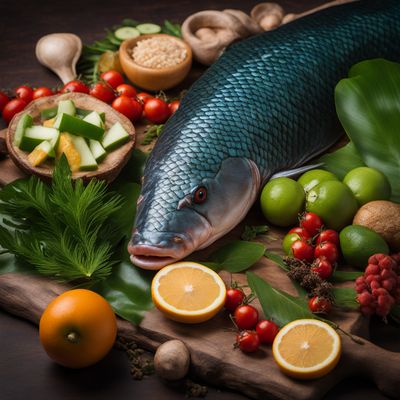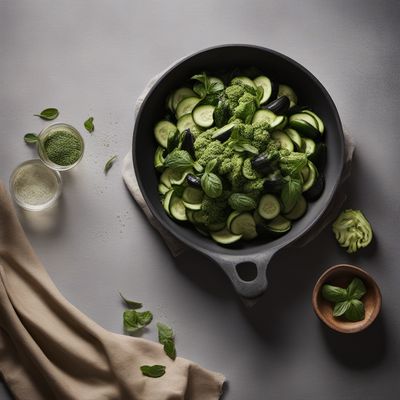
Ingredient
Silver perch
The Delicate Delight: Silver Perch
Silver perch is a freshwater fish species that is native to Australia. It is highly regarded for its delicate flavor and tender flesh, which lends itself well to various cooking methods. The fish has a silvery appearance with a streamlined body and a slightly protruding lower jaw. Its flesh is white, flaky, and moist, making it a popular choice for both simple and elaborate seafood dishes.
Origins and history
Silver perch has a rich history in Australian Indigenous culture, where it has been an important food source for thousands of years. It is considered a sustainable fish species and is often farmed in aquaculture systems to meet the demand for its delicate flesh. Today, silver perch is enjoyed in a variety of dishes, from pan-seared fillets to hearty fish stews.
Nutritional information
Silver perch is a good source of lean protein and contains essential nutrients such as omega-3 fatty acids, vitamin D, and selenium. It is also low in calories and saturated fat, making it a healthy choice for seafood lovers. Incorporating silver perch into your diet can support heart health, brain function, and overall well-being.
Allergens
There are no known allergens associated with silver perch. However, individuals with fish allergies should exercise caution and consult with a healthcare professional before consuming it.
How to select
When selecting silver perch, look for fish that have clear, bright eyes, shiny skin, and a fresh, mild aroma. The flesh should be firm to the touch and bounce back when pressed. Avoid fish that appear dull, discolored, or have a strong fishy smell, as these are signs of poor quality or spoilage. If purchasing fillets, ensure that they are free from any bruising or discoloration.
Storage recommendations
To maintain the freshness of silver perch, store it in the refrigerator on ice or in a sealed container. It is best to consume the fish within a day or two of purchase for optimal flavor and texture. If freezing, wrap the fish tightly in plastic wrap or place it in an airtight container to prevent freezer burn.
How to produce
Silver perch can be produced through aquaculture systems, which involve raising the fish in controlled environments such as ponds or tanks. This ensures the availability of fresh and sustainable silver perch year-round. However, it is recommended to purchase silver perch from reputable suppliers or fishmongers to support responsible fishing practices and ensure the highest quality.
Preparation tips
Silver perch can be prepared using various cooking techniques, including grilling, baking, pan-frying, or steaming. The fish's delicate flesh requires gentle handling to preserve its tenderness and flavor. Season it with herbs, spices, or citrus to enhance its natural sweetness, and serve it alongside fresh vegetables or a light sauce for a well-balanced meal.
Culinary uses
Silver perch is commonly used in a variety of seafood dishes, including fish fillets, fish cakes, fish stews, and fish tacos. Its delicate flavor and tender texture make it a versatile ingredient that can be enjoyed in both simple and complex preparations. From a classic grilled silver perch fillet to a flavorful fish curry, this fish offers endless possibilities for culinary exploration.
Availability
Silver perch is native to Australia and is commonly available in Australian markets and seafood suppliers. It is also exported to various countries, making it accessible to seafood enthusiasts around the world.
More ingredients from this category » Browse all

Arapaima
The Mighty Arapaima: A Culinary Treasure from the Amazon

Perch
Delicate Perch: A Freshwater Gem

Characins
The Diverse World of Characins: Exploring the Beauty and Variety of These Tropical Fish

Climbing perch
The Aquatic Acrobat: Exploring the World of Climbing Perch

Mandarin fish
The Delicate Delight: Mandarin Fish

Nile perch
The Mighty Fish of the Nile: Unveiling the Secrets of Nile Perch

Perch, golden
The Golden Catch: Perch

White crappie
The Delicate Delight: Exploring White Crappie

Largemouth black bass
The Prized Catch: Largemouth Black Bass

Snakeheads(=Murrels)
The Mighty Murrels

Cod, murray
The Mighty Murray Cod: A Delicate Delight

Bluegill sunfish, or bluegill bream
The Freshwater Delight: Bluegill Sunfish

